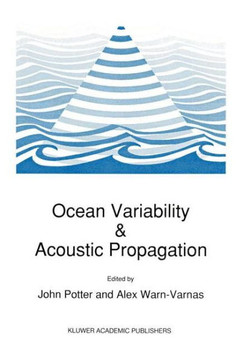
Createspace Independent Publishing Platform
Global Upper Ocean Heat Content and Climate Variability
Product Code:
9781502972446
ISBN13:
9781502972446
Condition:
New
$15.75

Global Upper Ocean Heat Content and Climate Variability
$15.75
Observational data from the Global Temperature and Salinity Profile Program (GTSPP) were used to calculate the upper ocean heat content (OHC) anomaly. The thickness of the upper layer is taken as 300 m for the Pacific/Atlantic Ocean and 150 m for the Indian Ocean since the Indian Ocean has shallower thermoclines. First, the optimal spectral decomposition (OSD) scheme was used to build up monthly synoptic temperature and salinity data set for January 1990 to December 2009 on 1o?1o grids and the same 33 vertical levels as the World Ocean Atlas. Then, the monthly varying upper layer OHC field (H) was obtained. Second, a composite analysis was conducted to obtain the total-time mean OHC field ( H ) and the monthly mean OHC variability (H% ), which is found an order of magnitude smaller than H . Third, an empirical orthogonal function (EOF) method is conducted on the residue data ( H ), deviating from H +H%, in order to obtain interannual variations of the OHC fields for the three oceans. In the Pacific Ocean, the first two EOF modes account for 51.46% and 13.71% of the variance, representing canonical El Nino/La Nina (EOF-1) and pseudo El Nino/La Nina (i.e., El Nino Modoki) (EOF-2) events. In the Indian Ocean, the first two EOF modes account for 24.27% and 20.94% of the variance, representing basin-scale cooling/warming (EOF-1) and Indian Ocean Dipole (EOF-2) events. In the Atlantic Ocean, the first EOF mode accounts for 49.26% of the variance, representing a basin-scale cooling/warming (EOF-1) event. The second EOF mode accounts for 8.83% of the variance. Different from the Pacific and Indian Oceans, there is no zonal dipole mode in the tropical Atlantic Ocean. Fourth, evident lag correlation coefficients are found between the first principal component of the Pacific Ocean and the Southern Oscillation Index with a maximum correlation coefficient (0.68) at 1-month lead of the EOF-1 and between the second principal component of the Indian Ocean and the Dipole Mode Index with maximum 3 values (around 0.53) at 1-2 month advance of the EOF-2. It implies that OHC anomaly contains climate variability signals.
| Author: Naval Postgraduate School |
| Publisher: Createspace Independent Publishing Platform |
| Publication Date: Oct 26, 2014 |
| Number of Pages: 42 pages |
| Binding: Paperback or Softback |
| ISBN-10: 1502972441 |
| ISBN-13: 9781502972446 |





